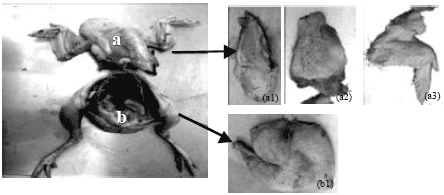Research Article
Carcass Composition of Jungle Fowl in Comparison with Broilers and Indigenous Chicken
Department of Veterinary Preclinical Sciences, Faculty of Veterinary Medicine, University Putra Malaysia, 43400 Serdang, Selangor, Malaysia
S. Mutuviren
Department of Veterinary Preclinical Sciences, Faculty of Veterinary Medicine, University Putra Malaysia, 43400 Serdang, Selangor, Malaysia
M.A. Hilmi
Faculty of Agriculture, University Putra Malaysia, 43400 Serdang, Selangor, Malaysia
S.M.A. Babjee
Department of Veterinary Preclinical Sciences, Faculty of Veterinary Medicine, University Putra Malaysia, 43400 Serdang, Selangor, Malaysia
H. Yaakub
Faculty of Agriculture, University Putra Malaysia, 43400 Serdang, Selangor, Malaysia
S. Fakurazi
Department of Veterinary Preclinical Sciences, Faculty of Veterinary Medicine, University Putra Malaysia, 43400 Serdang, Selangor, Malaysia














